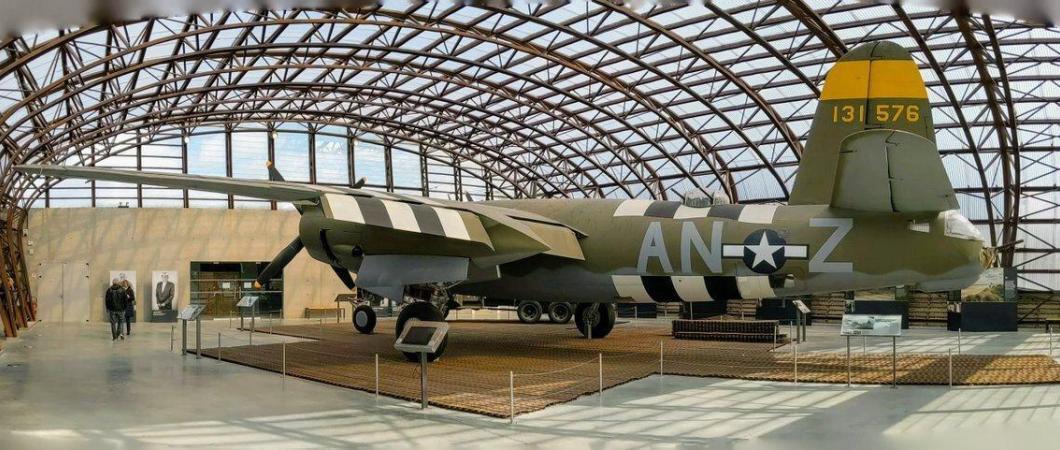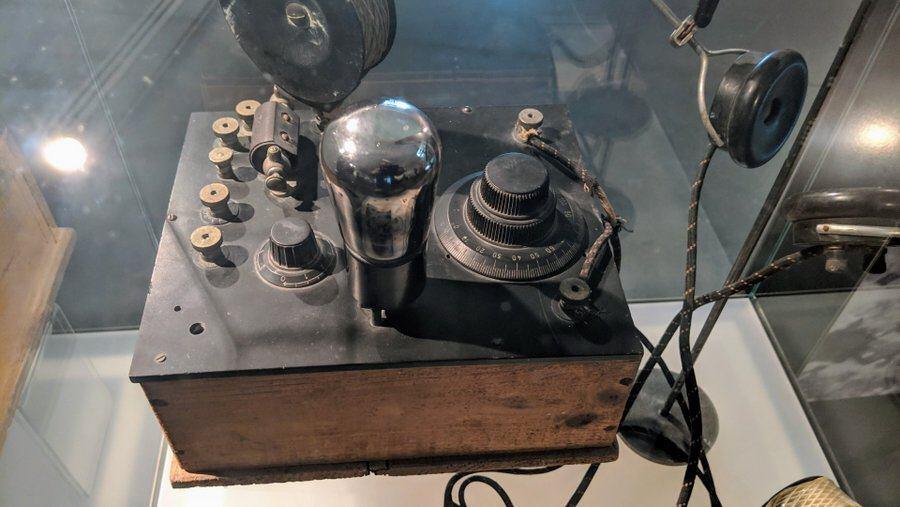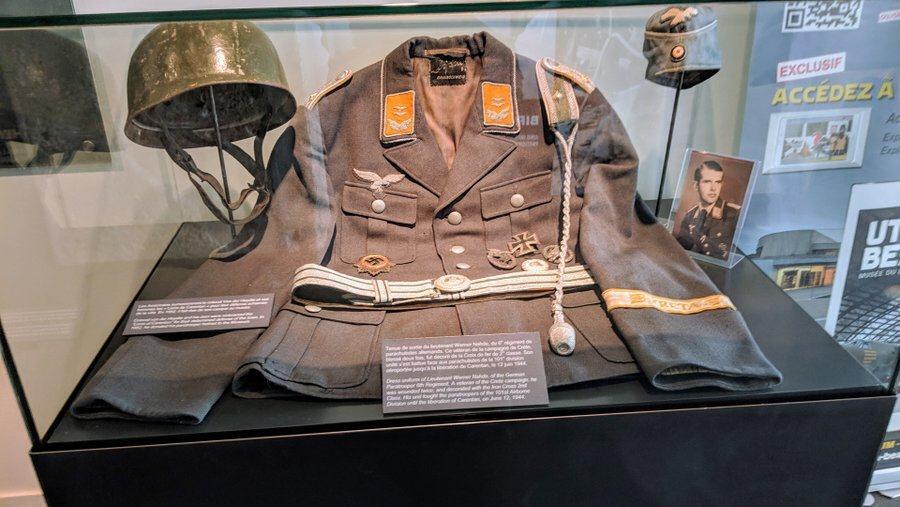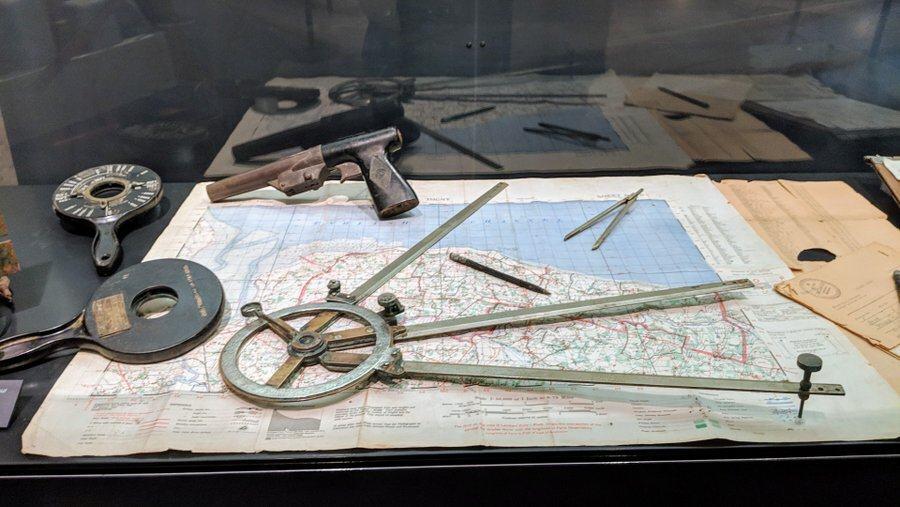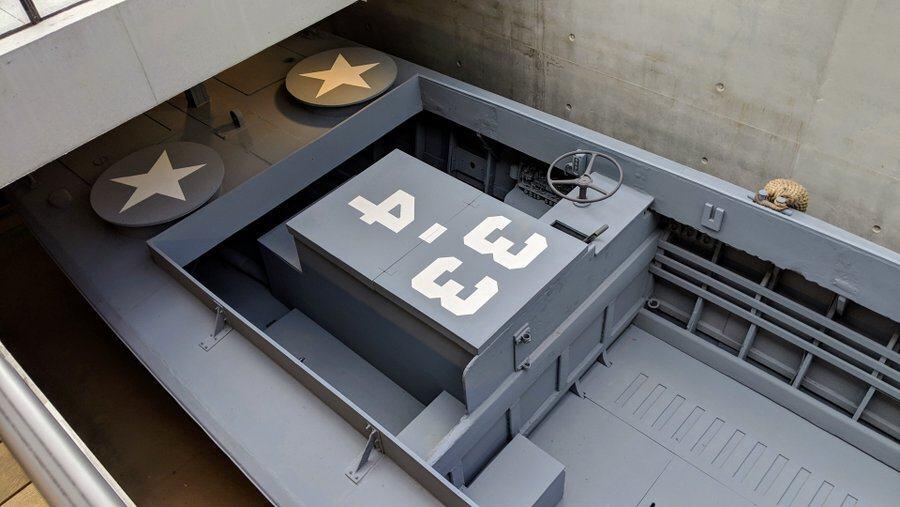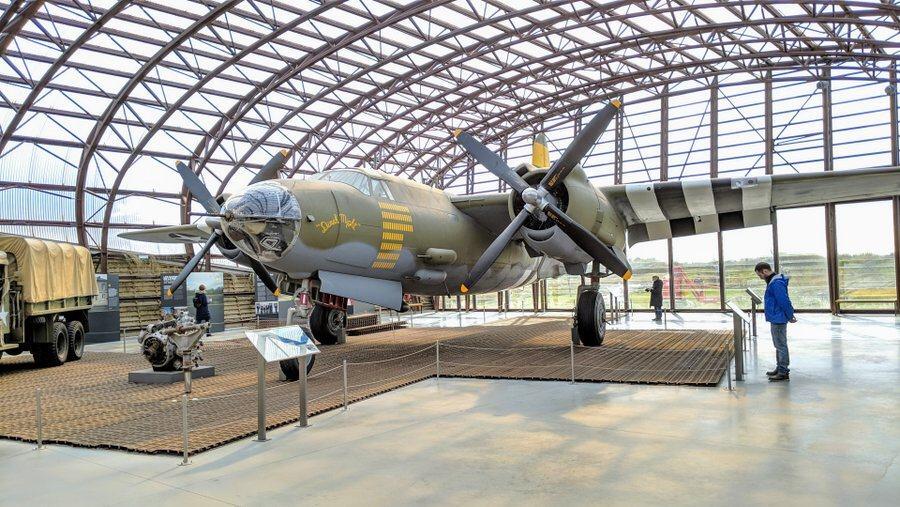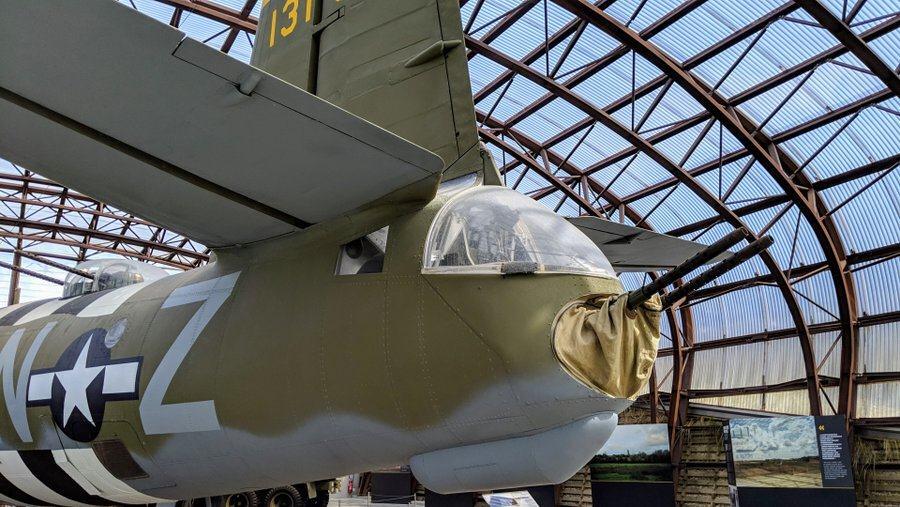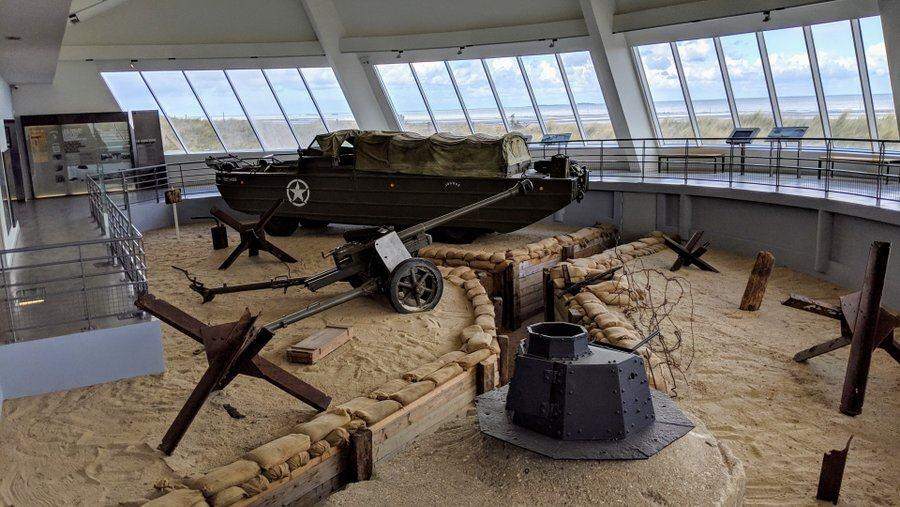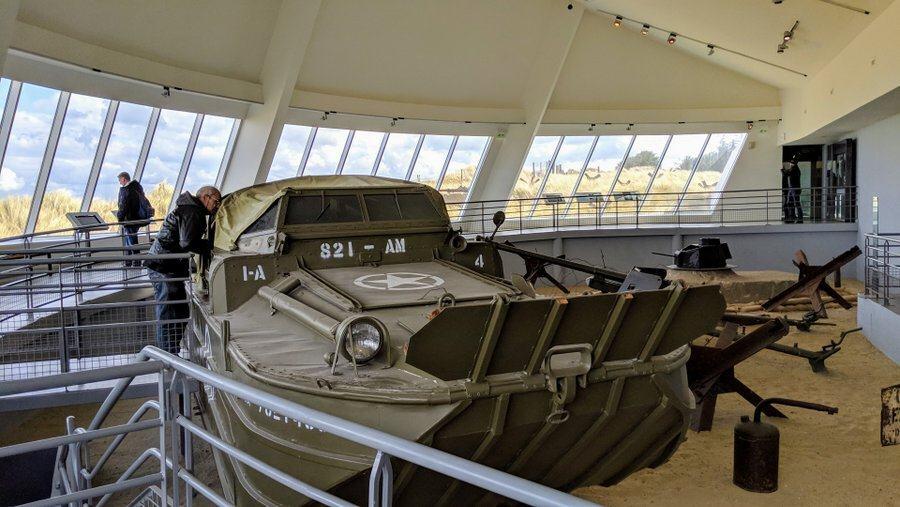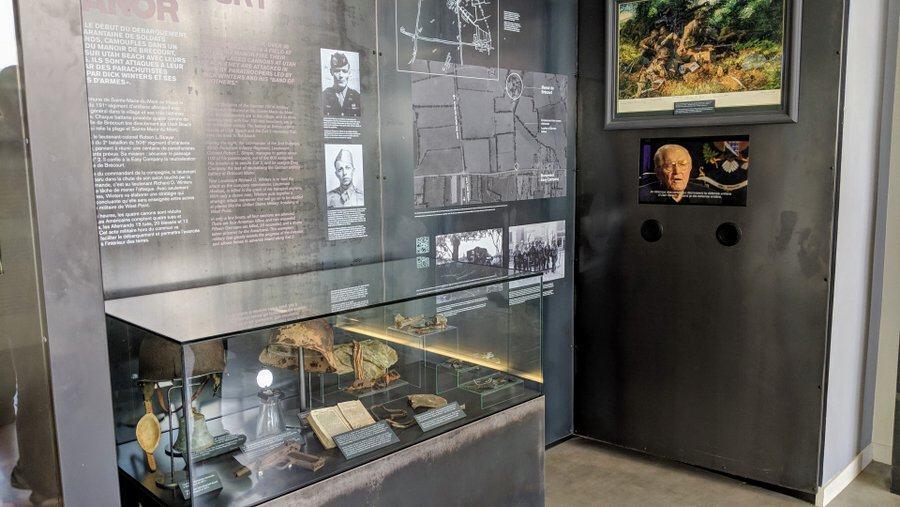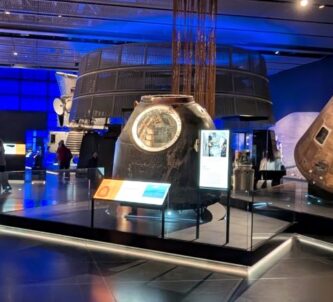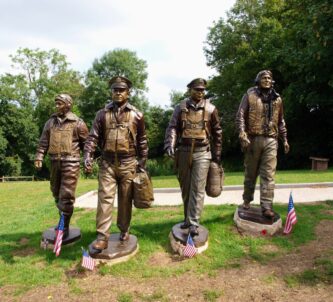You can’t miss the Utah Beach Museum. It’s right there, woven into the sand dunes that, along with the Germans, defended the shore in 1944. In fact it’s partially built on the remains of German bunkers.
The History
Utah beach was one the ‘extra’ beaches, added to operation Overlord when the planners realised that three beaches weren’t enough. Seven months before D-Day, Gen. Eisenhower ordered that Sword Beach should be added on the east side to enable a quick breakout to the city of Caen (it didn’t turn out to be very quick in the end!) and that on the west flank, Utah Beach should be added on the Cotentin Peninsula to launch an advance on the port of Cherbourg.
D-Day Normandy Posts
The Utah components of Operation Overlord began at 01.30am with the first airborne units arriving to capture the key crossroads at Sainte-Mère-Église ten kilometres inland, and take control of the flooded landscape between. Things didn’t go quite according to plan as we know. The paratroopers were scattered all over the place and the town wasn’t taken until the next day.
Then, from 0610 – 0625 9th USAAF B26 Marauder bombers and the guns of the Allied fleet softened up the beach defences.
Just think about that timing. The bombardment was scheduled to stop just five minutes before before the first troops landed on the beach. If ever there was a moment to be absolutely sure your watches were perfectly synchronised, this was it! Especially for the bomber crews flying from the UK. They had to be pinpoint accurate, with no GPS satellites telling them their precise location and time. On their way in, the B-26 crews could see the landing craft approaching the beach and the ships shelling the shoreline from behind.
Thanks to the tide and the loss of three control landing craft to mines, the first troops and tanks landed a kilometre south of their intended target. Fortunately, among them they had Brig. Gen. Theodore “Ted” Roosevelt III, who famously made the decision not to relocate but to “start the war from here”¹. “Here” is where the Utah Beach Museum is located.
Despite the misplaced landings, the operation at Utah Beach was surprisingly successful. The shelling and the bombing gave the Germans little chance to put up a strong defence. Of the 23,000 infantrymen who stormed ashore, 137 were killed on the beach with 60 missing.
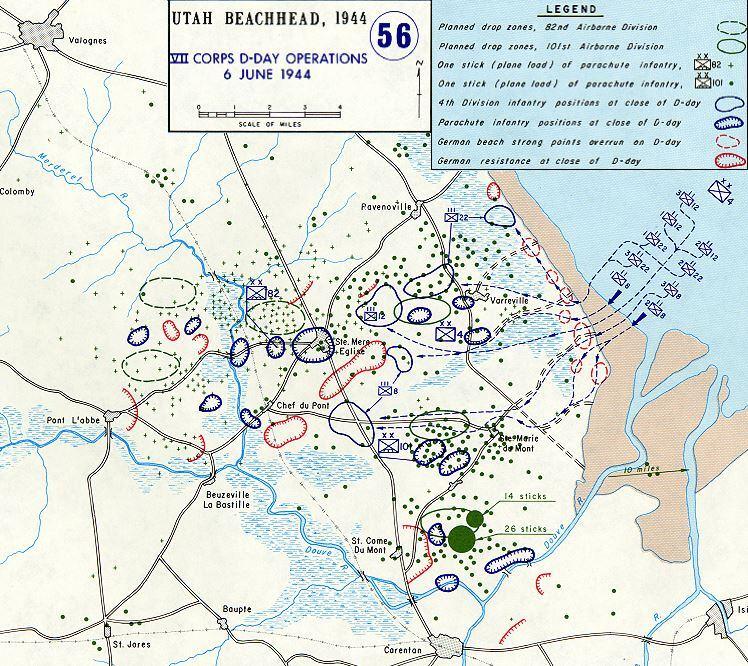
Nevertheless, progress inland was slow and by the end of the day they had reached only half of their planned advance. All the same, the most important objective had been met – they were ashore on a secure beach-head.
The Utah Beach Museum
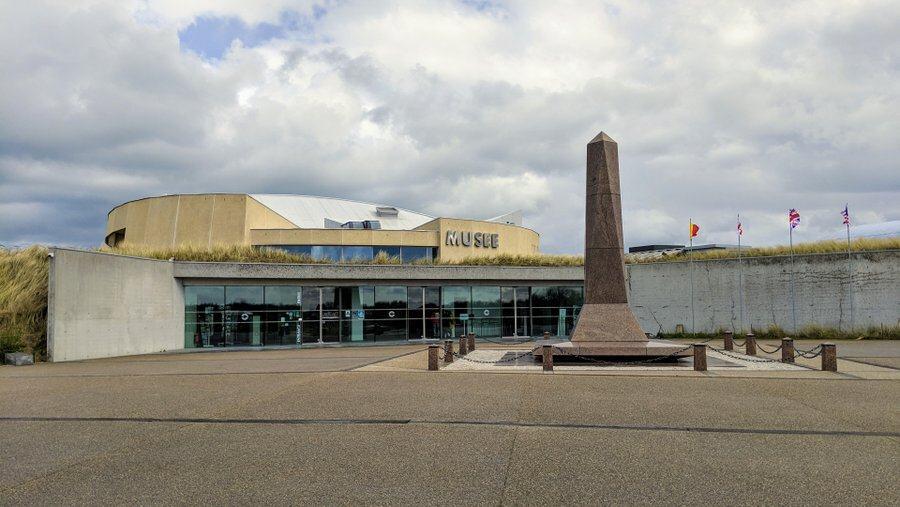
The museum and the memorials next to it are on the German defensive strongpoint WN5. The museum sits on the position of a ‘Tobruk’ with a Renault FT 37mm turret on top – a “concrete panzer”². This concrete panzer is incorporated into the museum’s panoramic galley looking out across the beach.
The museum has got some pretty special stuff.
Two of the larger exhibits in the main body of the museum are landing craft that actually landed on Utah Beach.
There are several galleries with artifacts, models and photos explaining what went on at Utah Beach, before the landing, during and after. For example, there are several display cases of clothes, weapons & kit used by the Germans defending the area, and artifacts from local French residents, including a homemade secret radio for listening to news and coded instructions for the French Resistance.
On one wall in the museum section on The Allied Strategy there is the original 13 ft x10 ft map of the Cotentin Peninsula used by General Joseph Lawton Collins “Lightning Joe” in his HQ to plan the invasion, breakout and capture of Cherbourg.
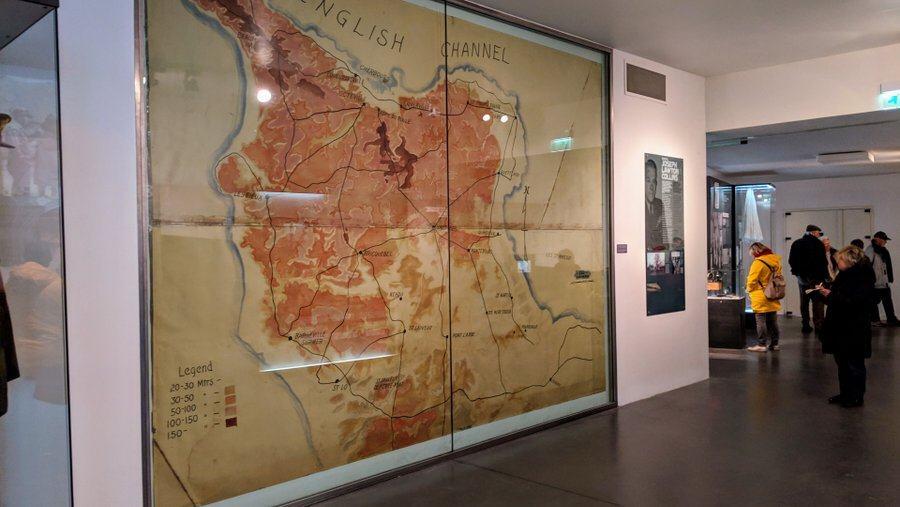
Two of the larger exhibits in the main body of the museum are landing craft that actually landed on Utah Beach.
One is LCVP assault craft (“Higgins Boat”) PA 33-4, the only known original LCVP to have participated in the D-Day landings. She was No. 4 of 12 LCVPs carried on USS Bayfield (APA 33) and carried men & their equipment ashore at both Utah & Omaha beaches.
The other is a ‘Water Buffalo’ LVT-2 (Landing Vehicle Tracked), which could transport up to 20 troops or three tons of cargo. This one was restored in 2010 (the upper hull is a reproduction) landed men on Utah Beach and carried them through the marshes behind the beach. A useful vehicle.
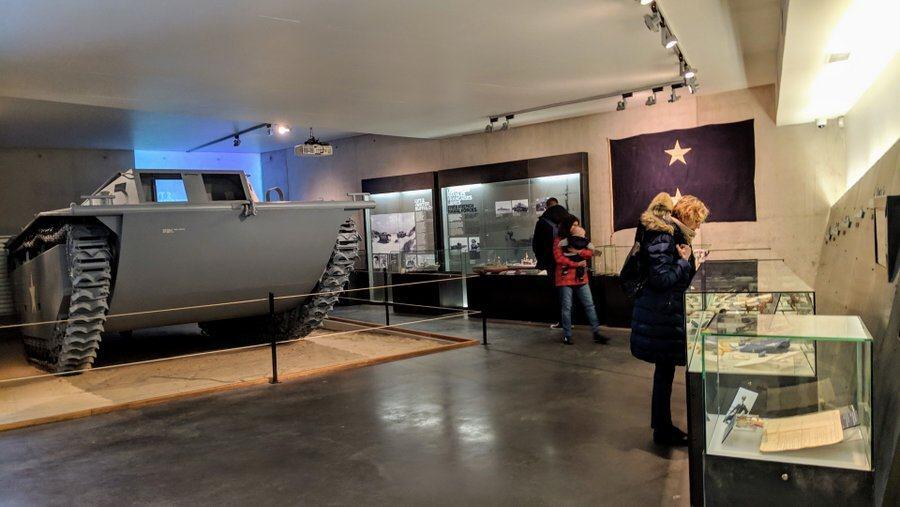
There’s also a recreation of a pilot’s briefing room for the USAF 386th Bombardment Group (Medium) flying B-26 Marauders, which sets you up for the only example you’ll see this side of the Atlantic of a B-26 Marauder.
There are a couple of stand-out highlights for me in the museum, and they are in the two extensions.
There are only six Marauders in existence, from the 5,157 built during the war. Five are in museums in the USA. The sixth is here in its own stunning glass hanger extension built in 2011. This B-26 G is painted in the colours of an aircraft, ‘Dinah Might’ from the 553rd Bomb Squadron of the 386th Bomb Group, which was piloted by Major David H. Dewhurst who led the attack on the German strongpoint WN5 at Utah beach – the location of the museum.
In reality it is a French aircraft on long term loan from the Bourget Air & Space Museum. It was delivered from the USA to the French Army on 20th May 1945, 12 days after VE Day, so it never saw action. During the 50s it was used by Air France to train engineers… and that’s about it! Fortunately for us, the Air & Space Museum preserved it, which is a good thing because although the B-26 had its fair share of technical teething troubles and operational difficulties when it first went into service, it became one of the most successful bombers of the war, and the safest. Only 17% (900) were lost in battle, the lowest rate of any Allied aircraft type.
In the panoramic gallery, added to the museum to mark the D-Day 50th Anniversary, there’s a recreation of beach defences & trenches, with an American DUKW and a ‘concrete panzer’ (the one mentioned above). In the corner there is a display of artifacts from the 105mm gun battery at Brécourt. I saw many museum visitors wandering past without taking much notice. I wonder if they would have stopped in their tracks if they had realised the old guy in the video screen was 101st Airborne’s Lieutenant Dick Winters (Band of Brothers) talking about his famous textbook attack on the four guns at Brecourt with just 12 paratroopers of Easy Company.
Outside the Museum
The museum shares its location with some memorials, which is hardly surprising since this is one of the key spots on Utah Beach.
There’s a simple memorial stone to the heroic dead of the 90th Infantry Division.
The US Navy is represented here by a large sculpture of three figures interwoven, commemorating the US Navy personnel in command, on the water, and on land (eg. Navy demolition teams).
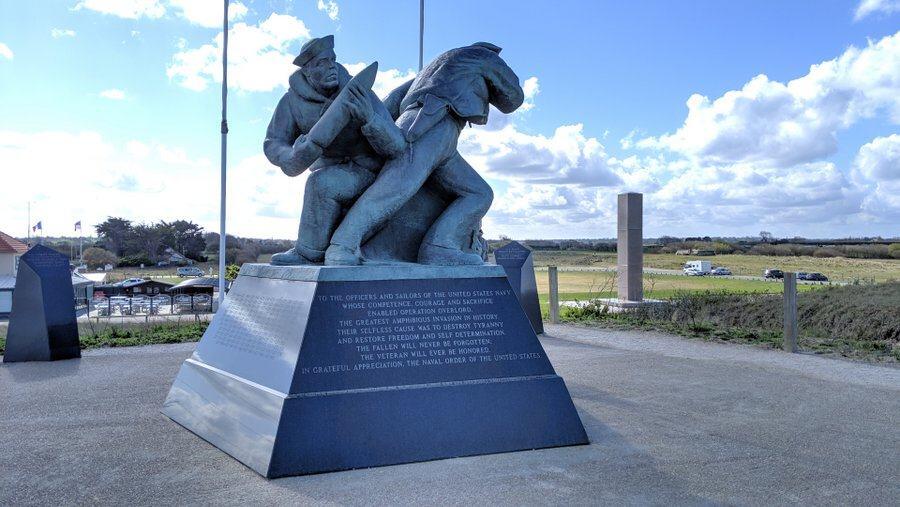
The 1st Engineer Special Brigade (ashore first) have a large memorial with steps, built on top of a German communications bunker that was, of course, used for the same purpose by the Americans.
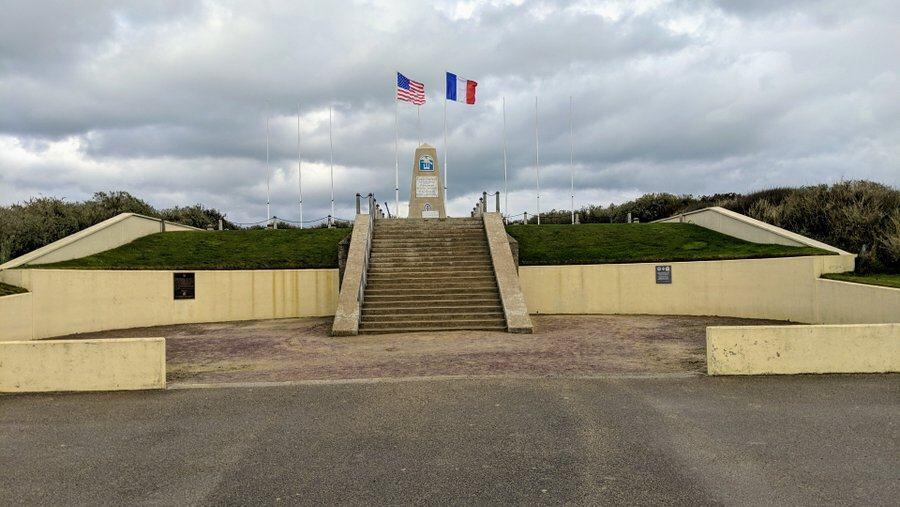
And, there’s a special memorial to the Higgins landing craft and its inventor.
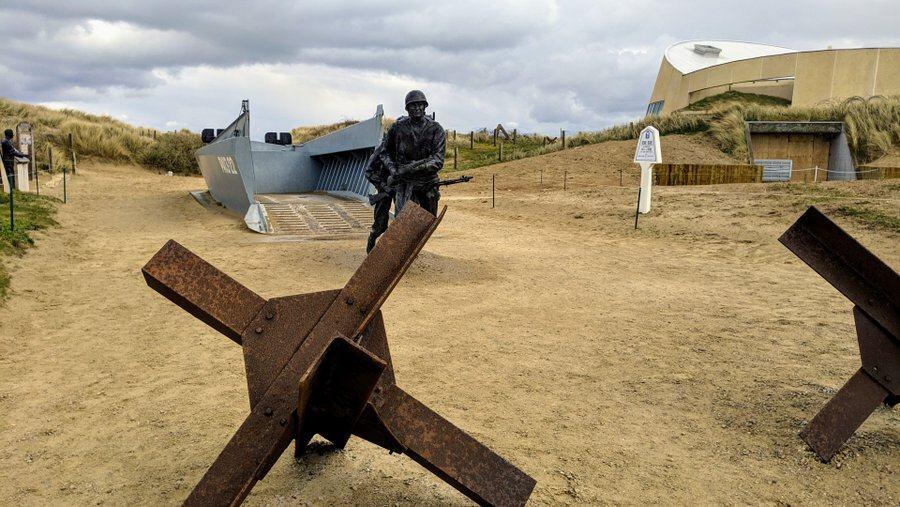
There are also a few other pieces of war gear dotted around outside the museum, including a Sherman tank.
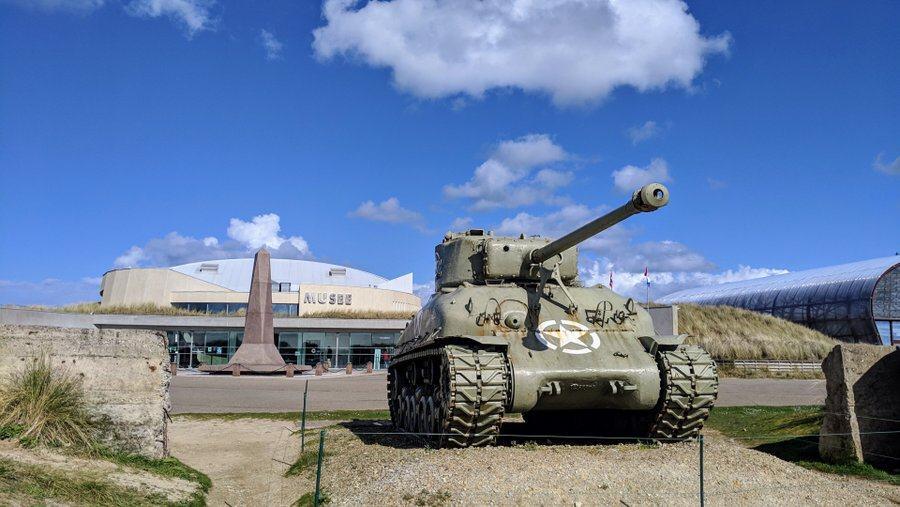
There’s no sign with it, but trying to identify it from other photos I’ve seen some commentators suggest its actually a British Firefly Sherman with the 17-pounder panzer-buster gun, but I’m not convinced. I think it’s an American 76mm M1A2 ‘Easy Eight’ Sherman. If you have the answer, let me know below.
¹ Stephen Ambrose, in his book on D-Day ![]() , mentions that this was disputed by the CO of the 8th Infantry Regiment, Col. Van Fleet, who was there when the decision was made, and claimed he made it.
, mentions that this was disputed by the CO of the 8th Infantry Regiment, Col. Van Fleet, who was there when the decision was made, and claimed he made it.
² In his book D-Day Through German Eyes ![]() , Holger Eckhertz publishes interviews conducted by his grandfather, Dieter Eckhertz with German soldiers who were there. One of them, Stefan Heinevez, a Gefreiter with the 919th Grenadier Regiment, manned one of these concrete panzers at Utah.
, Holger Eckhertz publishes interviews conducted by his grandfather, Dieter Eckhertz with German soldiers who were there. One of them, Stefan Heinevez, a Gefreiter with the 919th Grenadier Regiment, manned one of these concrete panzers at Utah.
Declaration: I was on a self-driving press trip as a guest of the Normandie and Calvados tourist offices. Museum entry was complementary.
Factbox
Website:
Musée du Débarquement – Utah Beach
Getting there: Musée du Débarquement Utah Beach
Plage de la Madeleine
50480 Sainte Marie du Mont
France
It’s simple enough by road. Just take the coast road (D421) and you’ll find it! There’s parking nearby and a cafe.
Entry Price:
| Adult | € 8.00 |
| Child | € 5.00 |
| Child under 6 | Free |
| Adult group (open visit) | € 6.50 |
| Extra charge for a guided tour of the museum | € 1.50 |
| Extra charge for a full guided tour of the museum & beach site | € 4.00 |
| VIP tour (Not sure what this involves!) | € 50.00 |
Opening Hours:
1 Oct – 30 May: 10.00am – 6.00pm
1 Jun – 30 Sep:9.30am – 7.00pm
(Last entry one hour before closing.)
Annual closure: 1 to 25 Dec and 31 Dec to 1 Jan.

